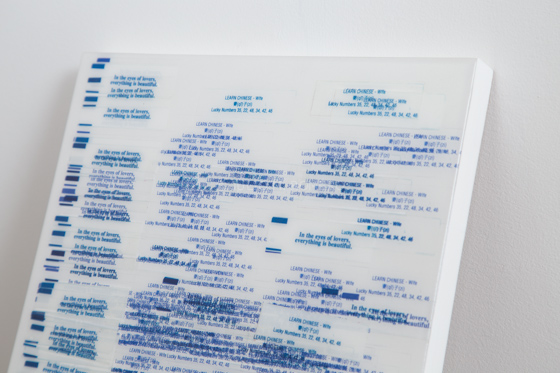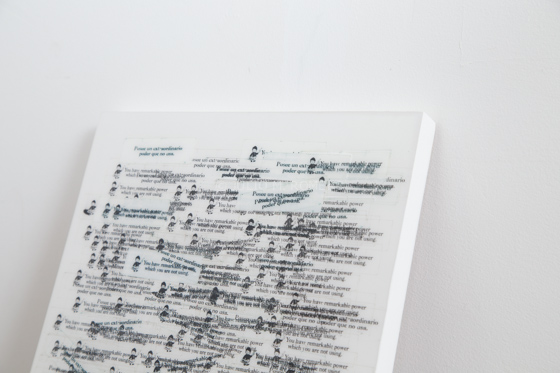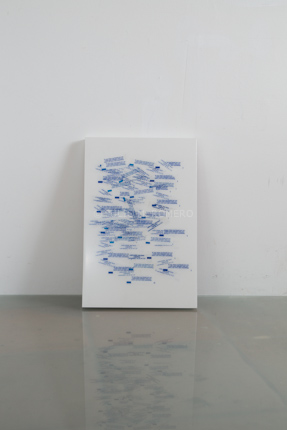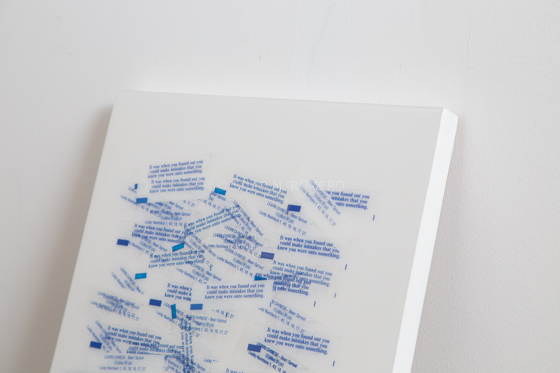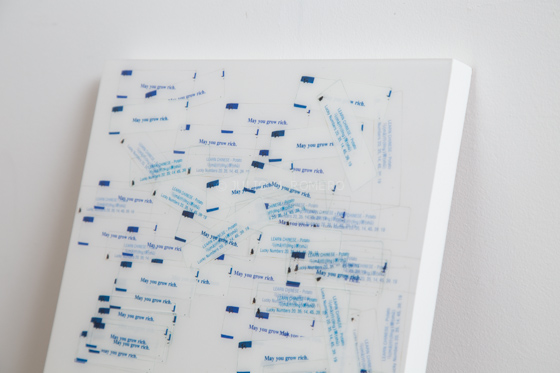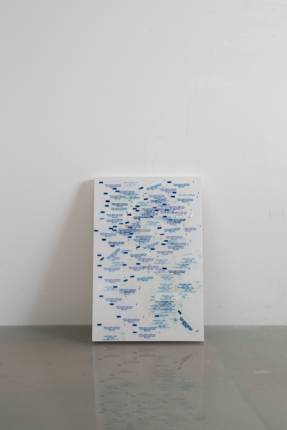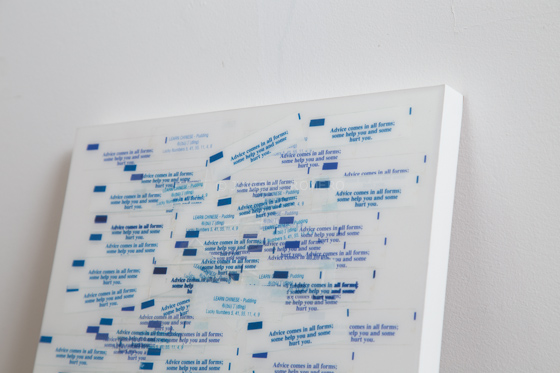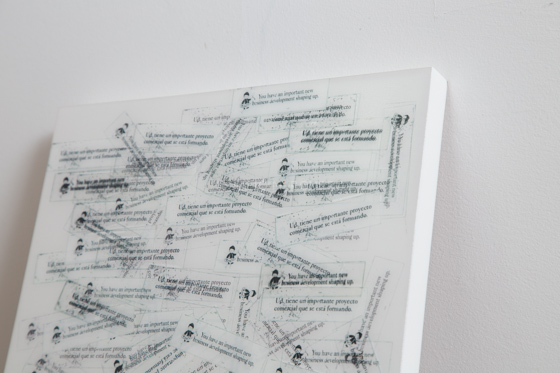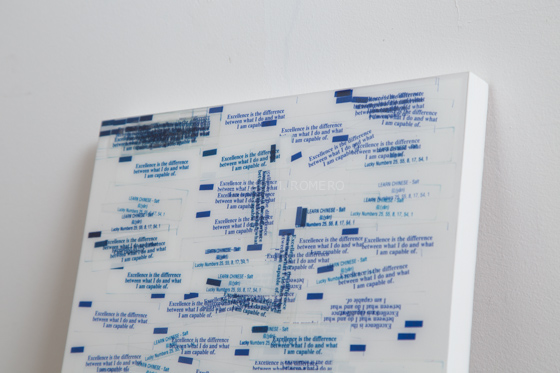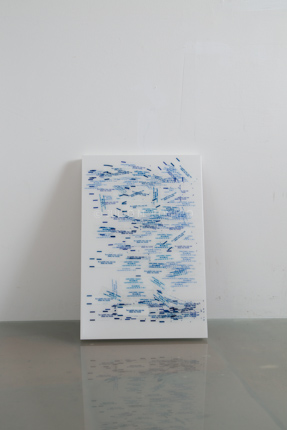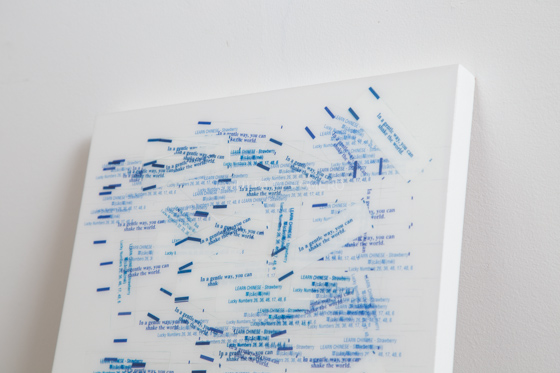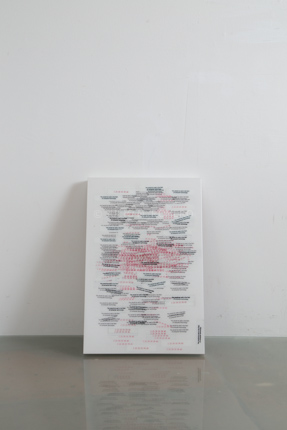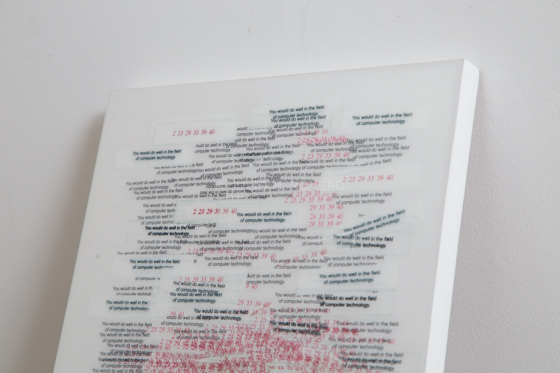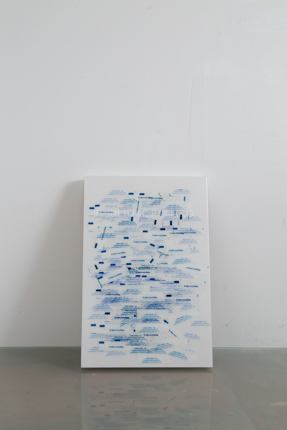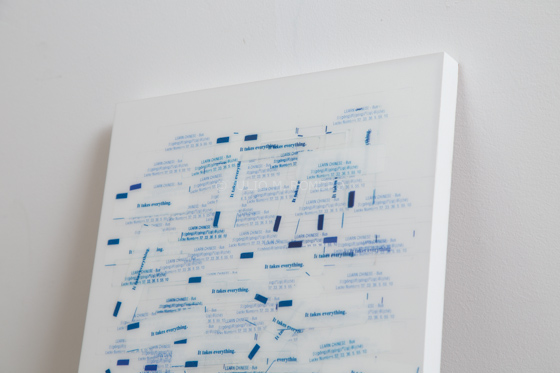The work of Julio M. Romero is distinguished by its relationship with language, the proliferation of images and chance involved in the fortuitous finding, understood as serendipity. It operates from a deterritorialized itinerancy, which does not ignore but transforms the strangeness of the known to play with its meanings. It processes the elements it collects in its living space and, rather than sublimating them, amplifies the ways of understanding them. He makes them his own, to then share the intimacy of that transaction. His exercise is that of a contemporary flâneur that does not go after the ruins, rubble and remains of reality, but goes after those objects that offer clues about the human lives that abandoned them, and the stories they left behind. In the particular case of this series, Romero bets to share a luck found. During the years of 2012 to 2016, as a result of his transfers and walks through Tijuana, Los Angeles, Mexico City and San Francisco, the artist collected the tickets that we found in the cookies of luck, those incidental fortunes that give closure to Our visits to Chinese restaurants, but in this case, by another kind of chance, were discarded by anonymous guests. Through a rigorous and processed work of collage, the messages contained in these tickets were printed, reprinted and spliced, as a way of détournement of the fortune as abandoned desire, as well as of the luck inscribed as secret communication between you and chance . An element to highlight of these tickets is their bilingual status: one side has the luck in Spanish inscribed, the other side has the English version. In many cases, the registered fortune is lost in the translation. They are literal transfers from one language to another, sometimes assuming cryptic messages that increase the enigma of the desired fate by an anonymous entity (which is actually a plant that incessantly manufactures these fortunes). The resulting work produces the fortunate discovery of that intersection between the visual and the textual, something that resembles this work with visual poetry, whose operative-aesthetic element is the materialization of language, the identification of the visual values of the text as a form , whose origins can be traced, curiously, to the famous poem by Stephane Mallarmé entitled Un coup de dés jamais n'abolira le hasard (A hit of dice will not abolish chance). In this series of beautiful prints, the joints, the patches, the "erasure" of the texts bewilders the inscribed fortune, diversifies it, does not dilute it, converting it into a collective desire. In this transaction, in that encounter of the viewer's gaze with the inscribed fortune, the abandoned luck of the others becomes our own fortune. - ALEJANDRO ESPINOZA GALINDO

